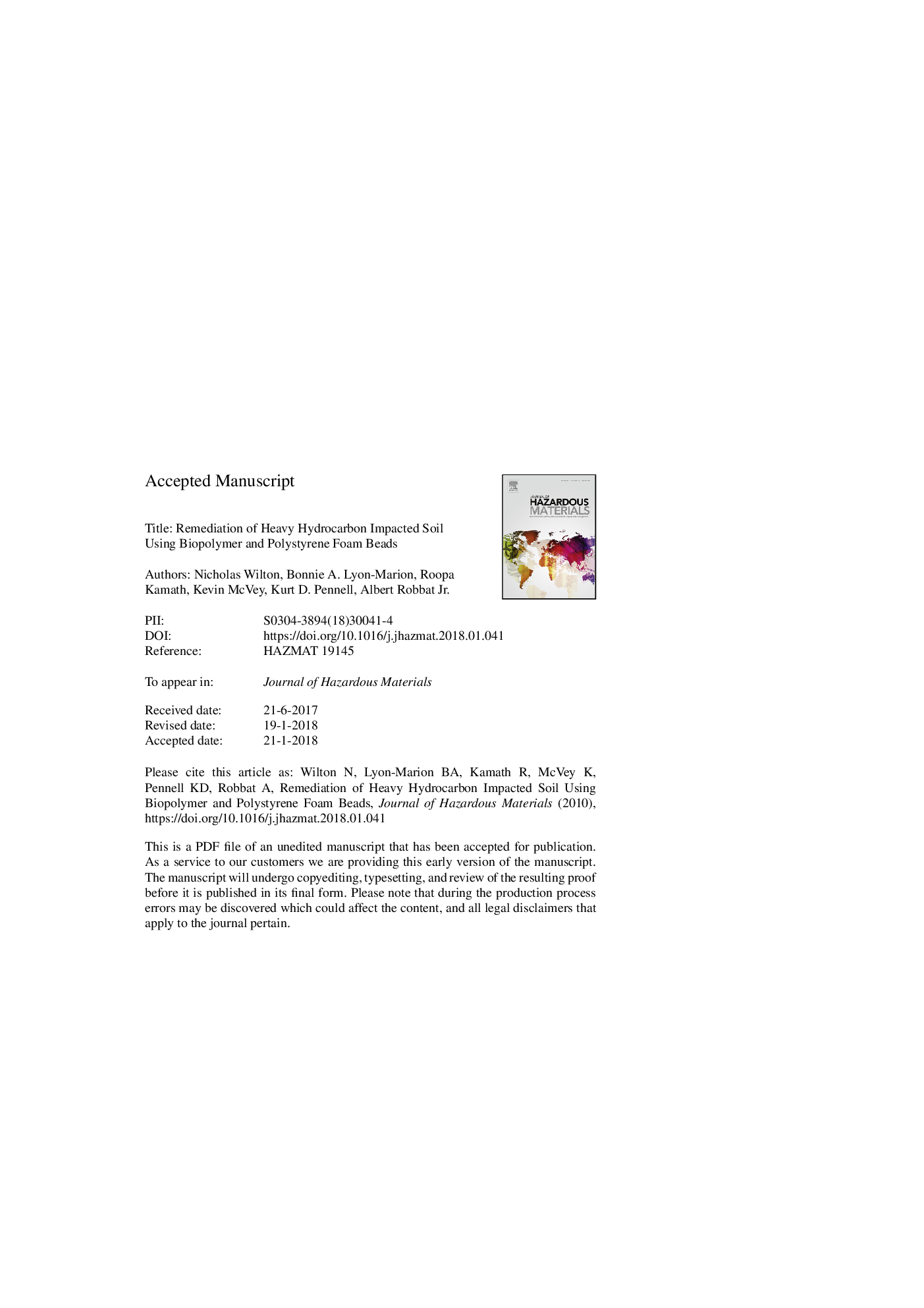| Article ID | Journal | Published Year | Pages | File Type |
|---|---|---|---|---|
| 6968857 | Journal of Hazardous Materials | 2018 | 19 Pages |
Abstract
A green chemistry solution is presented for the remediation of heavy hydrocarbon impacted soils. The two-phase recovery system relies on a plant-based biopolymer, which releases hydrocarbons from soil, and polystyrene foam beads, which recover them from solids and water. The efficiency of the process was demonstrated by comparisons with control experiments, where water, biopolymer, or beads alone yielded total petroleum hydrocarbon (TPH) reductions of 25%, 52%, and 58%, respectively, compared to 94% when 1.25â¯mL of 1% biopolymer and 15â¯mg beads per gram of soil were agitated for 30â¯min. Reductions in TPH content were substantial regardless of soil fraction, with removals of 97%, 91%, and 75% from sand, silt, and clay size fractions, respectively. Additionally, treatment efficiency was independent of carbon number, C13 to C43, as demonstrated by reductions in both diesel fuel (C13-C28) and residual-range organics (C25-C43) of â¼90%. Compared to other published polymer- and surfactant-based treatment methods, this system requires less mobilizing agent, sorbent, and mixing time. The remediation process is both efficient and sustainable because the biopolymer is re-useable and sourced from renewable crops and polystyrene beads are obtained from recycled materials.
Keywords
Related Topics
Physical Sciences and Engineering
Chemical Engineering
Chemical Health and Safety
Authors
Nicholas Wilton, Bonnie A. Lyon-Marion, Roopa Kamath, Kevin McVey, Kurt D. Pennell, Albert Jr.,
